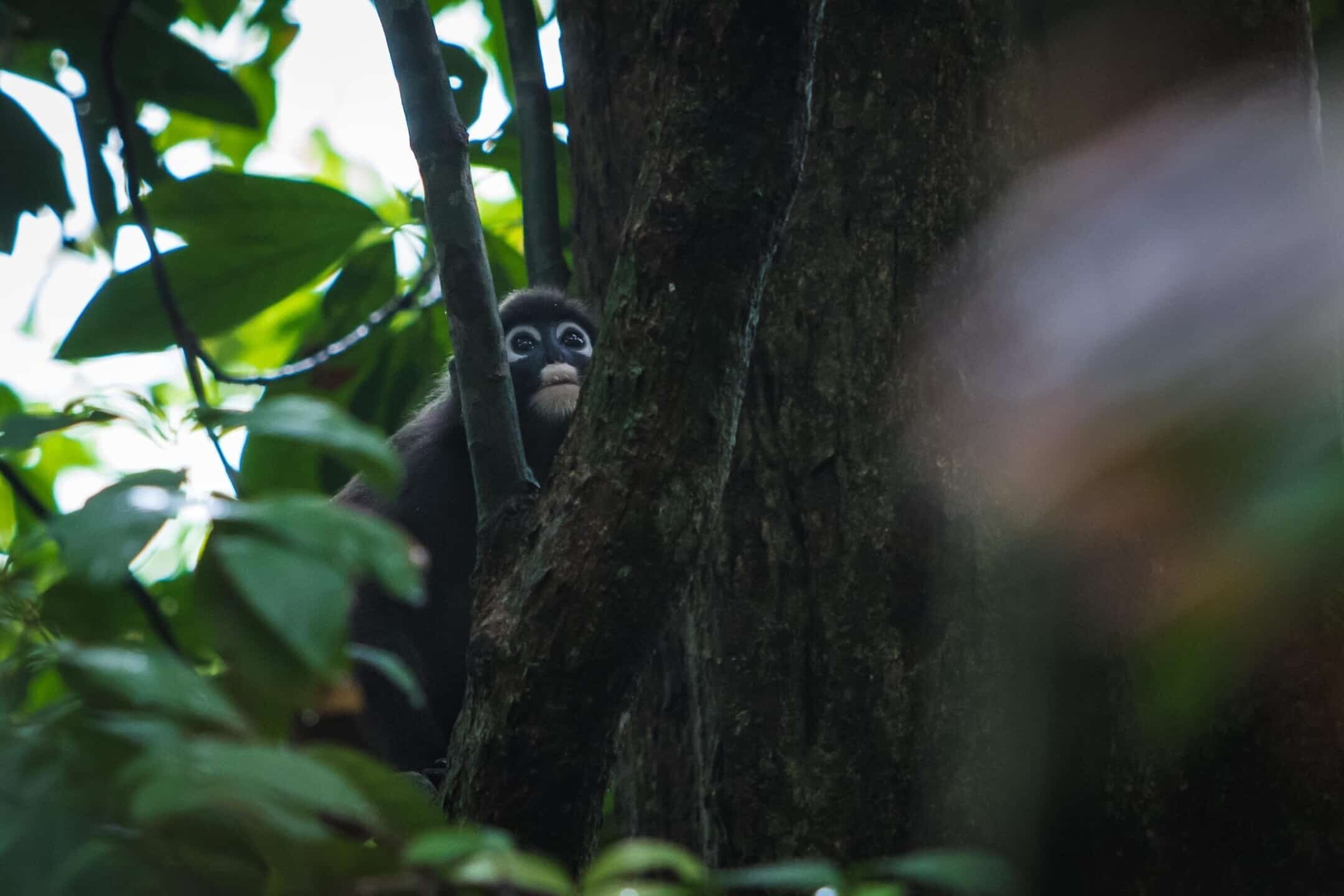Top Reasons for using back button focus for wildlife photography
Back button focus, why I switched.
I primarily switched to back button focus because I shoot a lot of wildlife. However, it benefits me for all the photography genres I focus on (see what I did there? complete accident, I’m useless at puns).
It’s a few years ago now since I heard about the concept of back button focus. At first I didn’t give a second thought, but then I started to think about the things that annoy me about the default focus/shutter button and decided to give it a try.
It may not seem like such a big deal which button you use to focus with. However, when you use the default half-click the shutter button to focus, you essentially have to refocus every time you take a shot.
Photographing long-tailed macaques in Penang National Park, Malaysia.
In wildlife photography when you often fire off many more shots than in other genres of photography, it can be a great benefit to keep the shutter and the focus button separate.
Back button focus on the Canon 7D mark ii
Top three reasons for swapping to back button focus now!
1.
Imagine you’re trying to focus on an animal that’s in amongst some branches. It can be hard enough to manage to get the animal in focus using the autofocus in the first place. Though, when you essentially have to refocus after every time you let go of the shutter button it can get messy!
Redwing in Aberdour, Scotland
Sometimes you’ll have your focus point spot on and your subject will be focused on in an instant. However, I bet you’ve experienced times when the autofocus is fooled or a branch gets in the way and it can take some time for your camera to refocus?
Using the back button focus, however, you can take the shot and leave the focus button alone. As long as you haven’t moved or the bird flew to another branch the focus distance will be the same and you can fire away.
2.
Mostly when I shoot wildlife I use the servo function so that I can continuously track my subject. However, this can get problematic when I want to focus on the eye of an animal and recompose for a better composition. I would have to switch to ‘one shot’ focus.
If using the default button I have to keep it half pressed, which can change my focus point.
However, by using the back button focus I can focus on the eye of the animal and let go of the button. Then recompose and take my shot with the shutter button. I essentially get the best of both worlds!!
Dusky langur in Penang National Forest, Malaysia
3.
My favourite reason for using the back button focus, however. Is that I can switch to manual focus whenever I want without having to switch to manual focus on my lens.
So in the previous example of trying to photograph an animal in amongst branches, the auto-focus simply may not be able to find what you want to focus on.
It’s then very easy to focus manually and press the shutter button. Normally the firing of the shutter would trigger the autofocus again and ruin my focus.
Red squirrel in Aviemore, Scotland
If you can identify with some of the frustrations of the default focus button, I encourage you to make the switch now you won’t regret it.
Except for those times you give the camera to a friend to take a picture of you, and you get a blurry unrecognisable image back….







